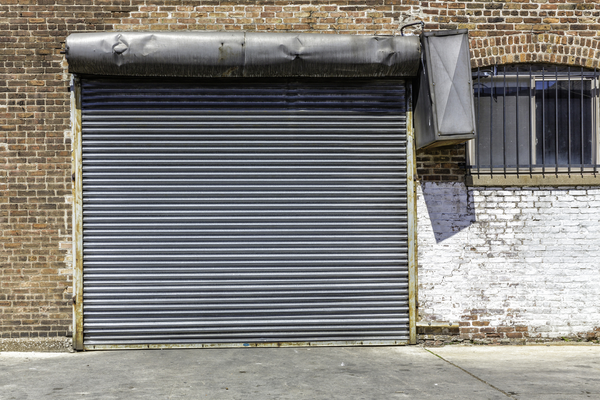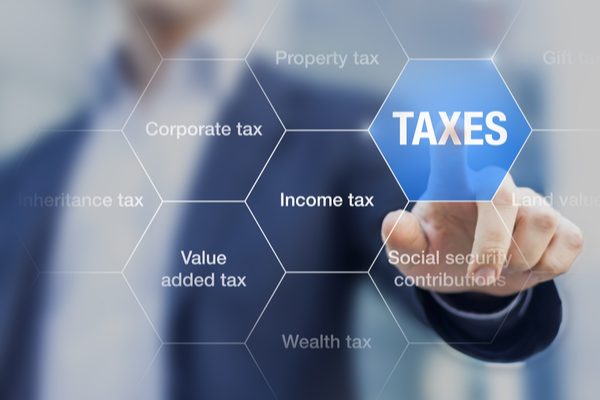Thinking of investing beyond residential and retail real estate? Try industrial property investing! Industrial properties are large allotments of real estate and infrastructure that are used for a variety of warehousing, manufacturing, and commercial purposes.
And they make excellent investments for a multitude of reasons. Almost everything we use on a daily basis—food, shampoo, clothes, laptops, showers, ovens, toys, bikes, cars, and so much more—come from industrial properties!
 Industrial properties are stable investments for two reasons. The first reason industrial properties make sound investments is because they cater to a variety of applications. Some popular uses for these spaces include manufacturing and production, distribution, retail, and office space. Whatever your industrial investment goals or needs, there is definitely an existing space to help you get started.
Industrial properties are stable investments for two reasons. The first reason industrial properties make sound investments is because they cater to a variety of applications. Some popular uses for these spaces include manufacturing and production, distribution, retail, and office space. Whatever your industrial investment goals or needs, there is definitely an existing space to help you get started.
The second reason that makes industrial properties excellent investments comes from the perpetually high supply and demand for industrial processes and employment. With food, sanitation, and infrastructure at the heart of every city and suburbs, there will always be a huge workforce ready to rent and run industrial projects on your site.
If you’re thinking of purchasing an industrial property, this article is for you. We’ve compiled a no-nonsense guide to industrial properties to help you exactly what you need! Read on to learn about 10 critical factors to consider with industrial properties.
Knowing the class of an industrial property will give you surface-level insights to the value of the investment at hand. Industrial real estate is graded with an A, B, or C classes according to their age, condition, and location. Classes are also graded according to the social and economic factors and predictions of the property’s location. Property classes can help you manage your expectations when it comes to planning for future renovations, tenants, and business traffic. Take a look at each class and how its grade pertains to the property quality.
Class A Industrial Property is the highest grade of industrial property. In this class, you will find the most expensive, pristine, and desirable properties. Class A real estate is new or recently renovated, is in excellent physical condition despite its age, is situated in a great location, and is bustling with economic activity. These types of properties generally rent to high-earning tenants in locations that experience very low vacancies. It is common for these types of properties to be professionally managed.
Class B Industrial Properties are secondary to Class A when it comes to age and/or quality of the property. Class B properties may be older, may contain less desirable amenities, and may be situated in less economically active locations. The tenants in this property grade generally earn less than Class A property tenants. Although it’s more common for these properties to managed by retail investors, professional management is not unheard of.
It is important to note that Class B properties can be re-graded to Class A properties after renovations. Some investors apply to rezone these properties during the renovation process as mixed-use real estate to hedge their risk and expand their application. The practice of rezoning industrial properties is common in emerging cities experiencing booming population and economic growth.
 Class C Industrial Property
Class C Industrial PropertyClass C Industrial Property score lower in all possible grading factors compared to Class A and B properties. Class C properties are almost always old—at least 20 years or older—and are inferior in physical condition and amentitiy availability. Class C real estate is located in rundown or undesirable areas. These types of properties need a lot of maintenance, renovation, or in some cases, complete remodels. These types of properties have high vacancy rates and low-income tenants.
If at first you are dissuaded by this property gradeI, we urge you not to overlook Class C properties. These types of properties may be promising investments for seasoned real estate investors looking to cataylze growth in a particular area. Just like Class B properties, Class C real estate can be re-graded, although they will require larger time and financial investments.
Lastly, this type of property may prove advantageous for a real estate investor who owns and operates their own business. If you intend to conduct your own business on the property, you don’t have to worry about renovations, resale value, or rental value right away. You can forego a lot of renovations and run your business as you please.
Just like how there is a class associated with each industrial property, there is also a type associated with each property. Industrial properties are classified into 8 types according to their physical condition, layout, and amenities. The type of industrial property will dictate the types of tenants you will rent to, as well as the businesses they own. Here is a quick overview of the different types of industrial properties.
Bulk Warehouse Properties are massive plots of land with lots of building square footage. Bulk warehouses are used for storing for inventory. They have high ceilings for installation or movement of large equipment. They can also have many delivery ports for trucks, trains, trailers, or planes.
Flex Warehouse Properties are a lot like bulk warehouses, except they are generally smaller in overall square footage and ceiling height. The main difference with flex warehouses is they can serve several applications in addition to storage, such as manufacturing, office space, and more. These types of properties are great for start up companies, small companies, etc.
 Heavy Manufacturing Properties
Heavy Manufacturing PropertiesHeavy Manufacturing Properties are intended for ongoing, high-capacity productions. Heavy manufacturing real estate often has heavy-duty manufacturing infrastructure built into the building. Such infrastructure includes electric power sources, water lines and filtration, ducting and ventilation, storage tanks, and exhaust. These facilities may or may not come with built-in production equipment like cranes, production lines, lifts, compressors, and more.
Light Assembly Properties are used for assembling products made on heavy manufacturing sites. Light assembly properties are a less intense version of heavy manufacturing properties. They may have comparable infrastructure and tools, but these properties focus more on assembling ready-made components instead of processing raw materials. This type of property tends to have less production machinery and instead more quality-checking, packaging, and distribution equipment.
Cold Storage Properties refer to large facilities with freezer and refrigeration spaces. This type of real estate is mostly used for food storage and distribution, but can also be used to store other perishable goods. Like warehouses, these types of properties tend to have many ports for various types of delivery vehicles.
Thanks to cloud computing, e-commerce, and data security, Telecom and Data Center Properties are a booming type of industrial real estate. Telecom and data centers are enormous properties equipped with large-scale electrical, power, and ventilation systems to maintain an optimal environment for computers, servers, and electrical equipment.
Industrial Showroom Properties buildings are a unique amalygmation of retail inventory and display. These spaces are commonly rented to tenants that sell and store large retail equipment like gun cases, refrigerators, furniture, and more.
Another great type of industrial investment property are Research and Development Properties. Research and Development properties are expected to remain in high-demand as software, computing, and electronic technology continues to be popular. This real estate appeasr similar to flex warehouses, except they usually are situated in large campuses or parks with landscaping and huge parking lots. Research and Development may have specialized equipment built-in or incorporated onto the property, such as computers, servers, or laboratory equipment.
 3. The Industrial Property Location
3. The Industrial Property LocationThis aspect is an extension of the class and type of property that really needs a lot of consideration. Location plays a huge role in the current and future value of your property, as well as the future success of the business that will take place in your industrial property.
It is important to the logistical factors of location, like nearby employers, workforce, industry supply and demand, and projected economic growth.
It is essential to research the economic activity and expectations of the area by which your property resides. Understanding the growth and activity of the local economy will give you an idea of how future construction and infrastructure projects will affect prospective tenants, customers, and employees who need to travel to your property. Informing yourself of the infrastructure and nearby construction will also give you realistic insights regarding how your suppliers, customers, tenants, or employees will reach your facility.
To contrast considering how the local economy will affect the value of your property, we urge you to think also about your residential neighbors. Consider how your industrial business may affect nearby residences, if any, as well as natural habitats.
These components are also extensions of the class and type of industrial property that need in-depth consideration. You will need to assess the class and type of your industrial property to ensure your property will be a responsible, safe, and productive place to conduct business. In addition to knowing the amounts you’ll have to pay for routine care, you’ll also have to have an idea for how often you’ll need to maintenance, inspect, lease, and renovate your property. Just remember—keep a detailed log of all the work done to your property. Having thorough records will help you through future instance claims and appraisals.
There is an endless number of legal issues to consider before purchasing an industrial property. Identifying the class and type of the property will help you out a lot when it’s time to legally safeguard yourself with code renovations and industry-specific insurance.
To eliminate the chance of future lawsuits, set yourself up for success by assessing the safety conditions of your workplace. Some common legal issues associated with industrial properties include ADA compliance, as well as noise, light, or environmental pollution.
Before renting out your industrial site, ensure your property is up to date with American Disabilities Act codes and regulations. This is a simple, but huge way to avoid the headaches of a discrimination lawsuit.
And when it comes to pollution of any kind, you need to perform your due diligence by inspecting the machinery, refuse, and sanitation processes of your facility. Performing noise and light pollution due diligence means considering the type of tenant you expect to lease to and how their productions will affect the surrounding residential quality of life. Note there may be noise and light ordinances in place where your property may be located. Performing environmental due diligence means informing yourself of the property’s past usages and any possible environmental accidents such as chemical spils. Your job afterward would be to complete any cleanup or renovations that would prevent further environmental harm.
 Property taxes are pretty straightforward and easy to calculate for a given area, but it does require some initiative on your part. You can investigate the property taxes of your city by exploring the local government’s website.
Property taxes are pretty straightforward and easy to calculate for a given area, but it does require some initiative on your part. You can investigate the property taxes of your city by exploring the local government’s website.
In short, the local government will assess the value of your industrial property and tax it accordingly. This brings us back to how crucial it is to understand how the class and type of an industrial property affects its value. A property that is overvalued with accrue high property taxes, and inversely, an undervalued property will have lower property taxes.
An interesting and sometimes overlooked aspect of this is tax breaks for your industrial property. There are several cases in which your property could benefit from a tax break, including depreciation deductions, non-mortage deductions, and more.
Considering the many use cases for industrial property, there is no doubt you will need at least one type of insurance for your property. Whether it be manufacturing, storage, or research and development, there is always the chance for something catastrophic to happen. Survey the types of insurances you are required to have as well as the types of insurance available to you. You’ll need to carefully determin the amount of coverage you need for the land, building, and machinery located on your property.
Some common industrial insurance packages include fire, flood and water damage, electrical outage, machinery accident, lessor’s risk, commercial property, and commercial general liability insurance.
And just like with condition and maintenance tasks, don’t forget to keep a record of any renovations and maintenances to fulfill insurance qualifications.
A loan for an industrial property has specific processes and requirements that differ from other real estate loans. For example, an industrial property loans are typically given to business entities with a loan-to-value ratio between 65% - 80%. Industrial property loans also have widely-varied repayment lengths with long-term amoritization schedules. Of course, there are other aspects particular to industrial property loans that will require further investigation.
Taking all of the above factors into account will give you a very realistic insight into the CAP rate of your industrial investment property. The Capitalization Rate (CAP rate) of a property refers to the financial returns you expect to receive from your real estate investment. If you plan on investing seriously in industrial real estate, you’ll want to consider properties that have promising returns given the value, location, and market demand for the property. You can calculate this rate using a CAP rate calculator. This calculation will take into account the revenue, expenses, vacancies, and value of the property.
Now that you’ve assessed all the possible factors concerning industrial property investments, it’s time to take a realistic look at your own risk tolerance. Industrial properties are large capital investments that can easily be destroyed by in-house accidents, natural disasters, lawsuits, or financial mismanagement.
For every dollar you decide to put into an industrial property, ask yourself if you are willing to lose it. If the answer is yes, proceed with caution. If the answer is no, consider investing in another, perhaps less risky type of real estate, like duplexes, AirBnBs, or real estate investment trusts (REITs).
Industrial properties are an exciting venture, but require lots of planning and a thorough understanding of the local economy, industrial use, and financial responsibility. We hope this article has helped you cover your bases when it comes time to consider a future investment in industrial real estate.